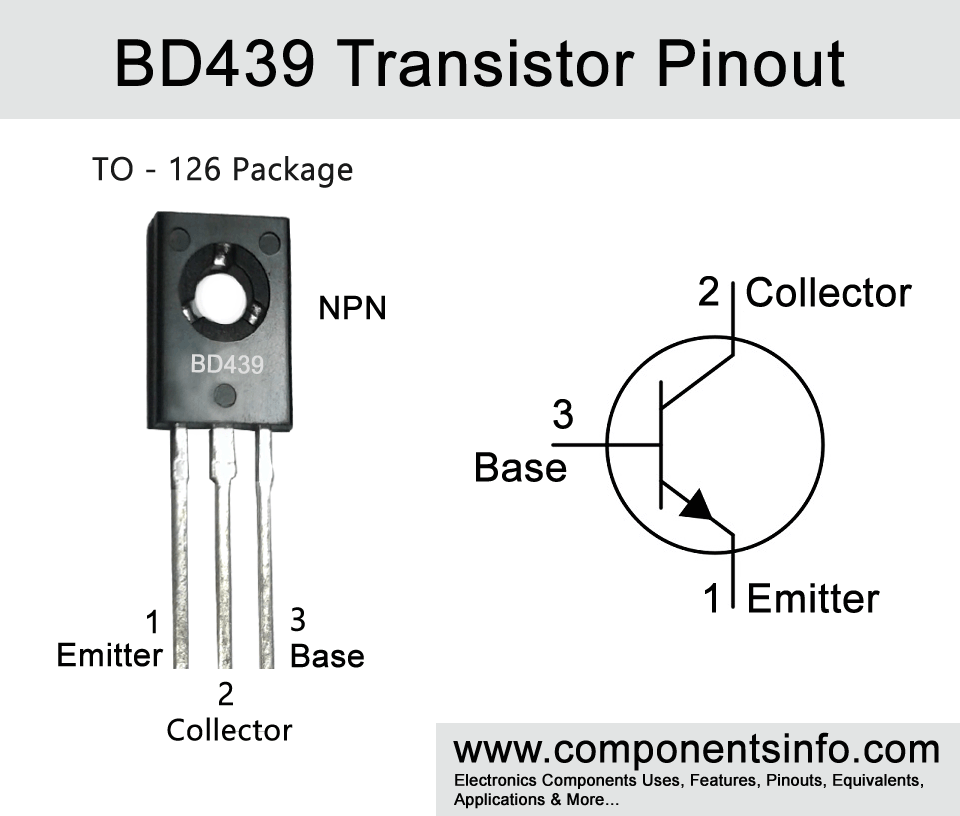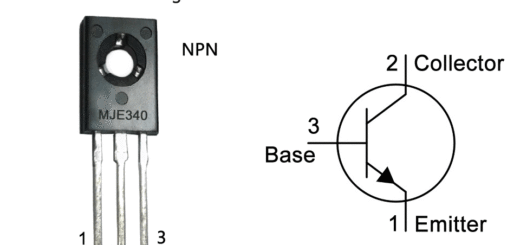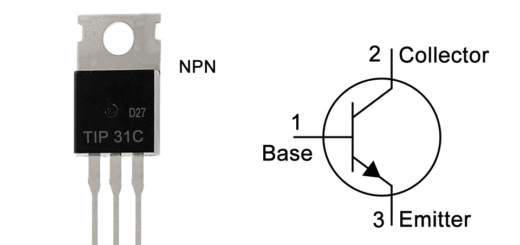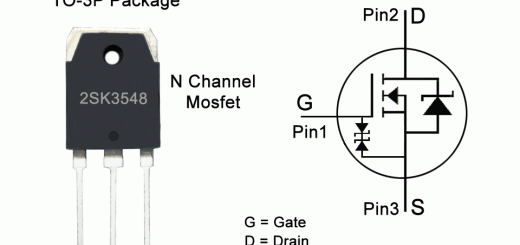BD439 Pinout, Features, Applications, Equivalents and Other Useful Info
This post contains all the important information about Bd439 transistor such as BD439 pinout, features, applications, equivalents and other useful information about this transistor.
Absolute Maximum Ratings:
- Package Type: TO-126
- Transistor Type: NPN
- Max Collector Current(IC): 4A
- Max Collector-Emitter Voltage (VCEO): 60V
- Max Collector-Base Voltage (VCBO): 60V
- Max Emitter-Base Voltage (VEBO): 5V
- Max Collector Power Dissipation (PC): 36W
- Max Transition Frequency (fT): 3 MHz
- Minimum & Maximum DC Current Gain (hFE): 20 – 140
- Max Storage & Operating temperature Should Be: -65 to +150 Centigrade
PNP Complementary:
The PNP complimentary of BD439 is BD440
Replacement and Equivalent:
2SC2823, 2SC2751, 2SD1485, BD333, BD791, MJE243, BD337, MJE241, 2SD1487, BD789.
BD439 Transistor Explained / Description:
If you are looking for a good medium power transistor that can drive load of upto 4A and can drive load voltage of upto 60V then BD439 can be a wise choice. The transistor is available in TO-126 package and can be used in a wide variety of switching and amplification applications.
The absolute maximum ratings of the transistor are the maximum collector current is 4A which is quite enough for variety of medium power applications, max collector to emitter voltage is 60V which is also enough to drive many types of loads, max collector to base voltage is also 60V, max emitter to base voltage is 5V and max power dissipation is 36 Watts.
The electrical characteristics of the transistor are DC current gain of 20 to 140, collector-emitter saturation voltage is 0.8V, collector-emitter sustaining voltage is 60V and transition frequency is 3MHz.
The transistor is from BD4xx series which also contains other transistors like BD435, BD437 & BD441 which have almost the same electrical characteristics and can be used in the place of each other. The only difference is their collector to emitter voltage but if you are using to drive load of under 24V then you can easily replace them with each other.
Where We Can Use it & How to Use:
The transistor is designed to be used in switching and amplification applications but it can also be used in a variety of other applications such as controller circuits, driver circuits, PWM circuits, charger circuits etc. To use the transistor first of all check its pinout then connect its Emitter pin with the negative supply of the circuit, its base with the input signal and its collector with the negative side of the load and the positive side of the load will be connected with the positive supply of the circuit.
Applications:
Switching Circuits
Solar Circuits
Audio Amplifiers
LED Drivers
Inverter Circuits
PWM controllers
Motor Drivers
Temperature Control Circuits
Inverter Circuits
Relay Driver Circuits
Many other General Purpose Applications
Safe Operating Guidelines:
Here are the safe operating guidelines of the transistor.
- For better performance, it is recommended to not drive it at its absolute maximum ratings and stay at least 20% below from these ratings.
- So regarding to the above 20% rule, the max collector current (Or the maximum load this transistor can drive) is 4A therefore do not drive load of more than 3.2A.
- The Max collector to emitter (Or the max load voltage this transistor can drive) is 60V so according to the 20% rule do not drive load of more than 48V.
- The storage and operating temperature of the transistor should be between -55°C to 150°C.
Datasheet:
To download the datasheet just copy and paste the below link in your browser.
https://datasheetspdf.com/pdf-down/B/D/4/BD439_FairchildSemiconductor.pdf



